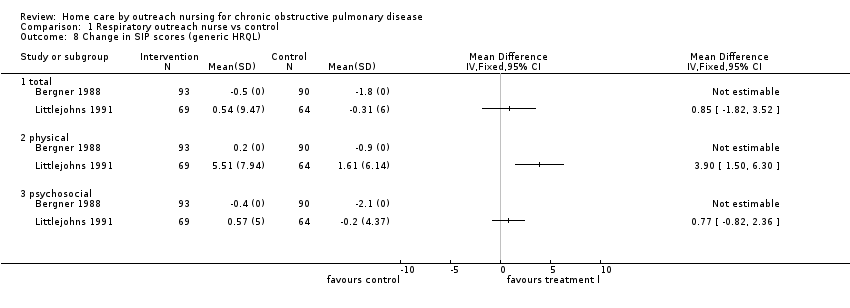Contenido relacionado
Revisiones y protocolos relacionados
Milo A Puhan, Elena Gimeno‐Santos, Christopher J Cates, Thierry Troosters | 8 diciembre 2016
Elisabeth Jeppesen, Kjetil G Brurberg, Gunn E Vist, Jadwiga A Wedzicha, John J Wright, Michael Greenstone, Julia AE Walters | 16 mayo 2012
Maxwell Howcroft, E Haydn Walters, Richard Wood‐Baker, Julia AE Walters | 19 diciembre 2016
Magnus Ekström, Zainab Ahmadi, Anna Bornefalk‐Hermansson, Amy Abernethy, David Currow | 25 noviembre 2016
Bernard McCarthy, Dympna Casey, Declan Devane, Kathy Murphy, Edel Murphy, Yves Lacasse | 24 febrero 2015
Anke Lenferink, Marjolein Brusse‐Keizer, Paul DLPM van der Valk, Peter A Frith, Marlies Zwerink, Evelyn M Monninkhof, Job van der Palen, Tanja W Effing | 4 agosto 2017
Susannah McLean, Ulugbek Nurmatov, Joseph LY Liu, Claudia Pagliari, Josip Car, Aziz Sheikh | 6 julio 2011
Timothy L Gatheral, Alison Rushton, David JW Evans, Caroline A Mulvaney, Nathan R Halcovitch, Gemma Whiteley, Fiona JR Eccles, Sally Spencer | 10 abril 2017
Catherine McCabe, Margaret McCann, Anne Marie Brady | 23 mayo 2017
Daniela J Vollenweider, Anja Frei, Claudia A Steurer‐Stey, Judith Garcia‐Aymerich, Milo A Puhan | 29 octubre 2018
Respuestas clínicas Cochrane
Anthony Byrne | 2 septiembre 2014
















